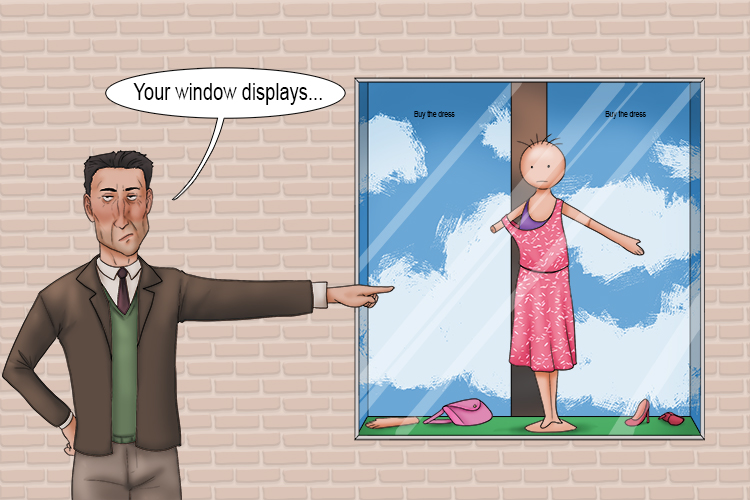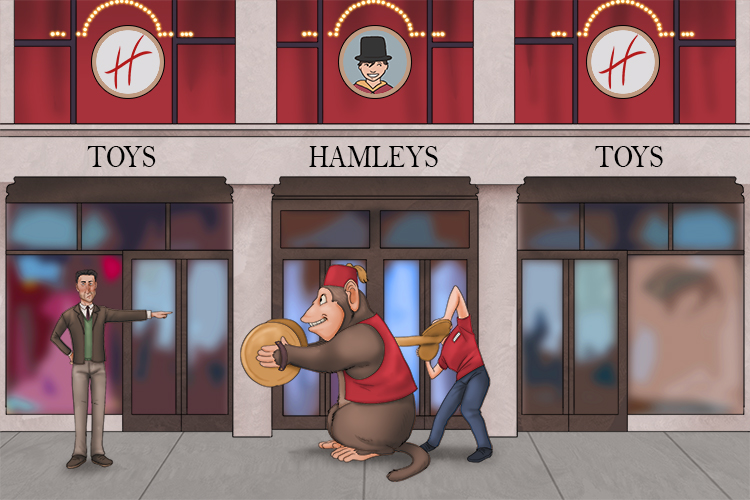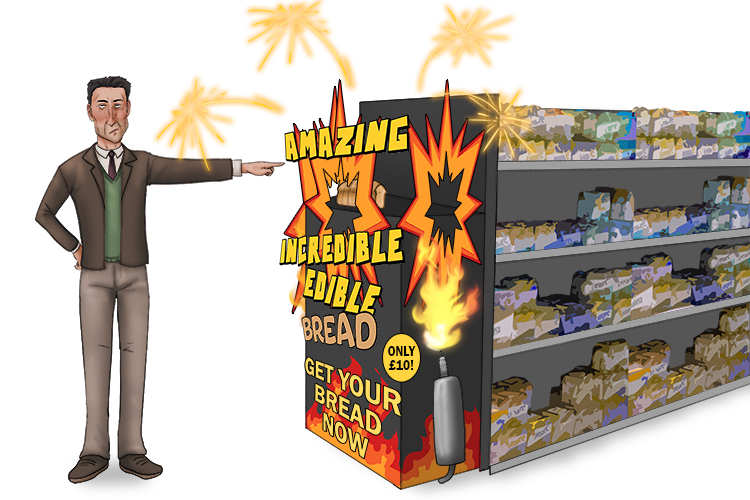Point of Sale (Advertising) – A method of increasing sales in store by using in-store advertising
The words, "point of sale" (merchandising) would be better understood if we called this "in store advertising," because point of sale does not just mean increasing sales where you hand over your credit card by having additional products around the sales counter.
To remember what point of sale is, use the following mnemonic:
The marketing consultant pointed out all the positions where we could improve sales (point of sale) by thinking of new places in the store to advertise (in store advertising) products. Add a display here and convert to a sale (advertising for a sale)

There are many places in a store to advertise (in store advertising) that will increase your sales. Impulse purchases, being an unplanned decision to buy something on the spur of the moment, is vital for retail businesses. Places include:
Window Displays
As can be seen from the picture above, window displays are a vital from of advertising. What better place to advertise than where so many people walk past and could possibly make an impulse purchase. There are companies such as Harrods in London who employ staff whose only job is to create amazing window displays (a point of sale merchandising position) to drive sales.
Product Demonstrations

Product demonstrations demonstrating the features and benefits of a product inside a shop is a “point of sale” which can significantly influence purchase decisions. This is particularly effective for products that require customer interaction or have unique selling points that are best showcased in person. The famous Hamley’s toy shop in London is an excellent example of this, with someone demonstrating a toy just inside the entrance way. It’s hard to say no to your child.
End of Aisle

At the end of an aisle, or what in the supermarket industry is called the ‘endcap’ is an important point of sale. It has been proved that you can enhance the sale of a product and gain a competitive edge if your product is advertised and promoted well at this location in a store.
Placement of products at the tills
Goods placed near the checkout counter are those that are most likely to be viewed by customers. Products here are placed in order to grab the attention of the customers as they prepare to check out. A pure impulse purchase that can increase sales.
Placement and Merchandising
Point of sale marketing involves strategic placement of products, promotional displays, and signage in high-traffic areas within a store. Eye-catching displays and attractive packaging can draw customers’ attention, spark interest, and encourage impulse purchases.
Promotions and Discounts
Offering special promotions, discounts or bundles at the point of sale can entice customers to make a purchase. This could include buy-one-get-one-free offers, limited-time discounts, or loyalty rewards that are only available at the point of purchase.
Upselling and cross-selling
Point of sale provides opportunities to upsell or cross-sell additional products or services. For example, a salesperson might suggest related accessories or an upgraded version of the product being purchased, increasing the overall sales value.
Branding and Messaging
Point of sale marketing is an opportunity to reinforce brand identity and messaging. Consistent branding, including logos, colours and slogans, helps create brand recognition and reinforces the perceived value of the product or service.
Digital point of sale
With the rise of e-commerce point of sale marketing has extended to digital platforms. Online retailers use techniques such as personalised recommendations, targeted pop-ups, and customer reviews to influence purchasing decisions at the point of online checkout.




